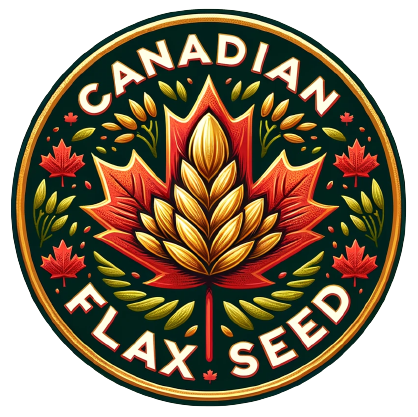Cross Continental Exchange: The Introduction of Flaxseeds to Canada
Table Of Contents
Exploring Cross Continental Exchange: The Introduction of Flaxseeds to Canada
Key Takeaways
- Historical background of the transcontinental trade involving flaxseeds in Canada
- Importance of flaxseeds in farming methodologies
- Pathway and exploration of flaxseeds arriving in Canada
- Financial effects of flaxseed farming on the economy
- Contemporary uses and advancements in flaxseed applications
Cross Continental Exchange: The Introduction Of Flaxseeds To Canada | Historical Context of Cross Continental Exchange
The introduction of flaxseeds to Canada marked a significant event in the historical context of Cross Continental Exchange. Originating from the American continent, flax rapidly gained traction across continents, especially in western Canada. The adaptability of flax as a crop proved vital for Canadian agriculture, leading to the establishment of a robust flax industry. The Canadian Grain Commission played a crucial role in regulating and promoting flaxseed production. The nutritional advantages of ground flaxseed and flaxseed oil contributed to its prominence in health-focused markets, further bridging international markets with Canadian agricultural practices. As the demand for these nutritious seeds grew, so did the importance of flax in shaping the agricultural landscape of the North American continent.
Cross Continental Exchange: The Introduction of Flaxseeds to Canada | PreColumbian Trade Networks
Pre-Columbian trade networks were complex systems that facilitated the exchange of various goods across continents, including the valuable flax (Linum usitatissimum). Indigenous peoples in North America utilized these trade routes to share agricultural products, which may have included early forms of flaxseed meal and flax oil. This exchange set the stage for the future introduction of flaxseeds to Canada, where regions like Saskatchewan and Alberta would later become significant producers. The role of these networks highlights the interconnectedness of different cultures and economies prior to European exploration.
The Gauls, who were known for their advanced agricultural techniques, played a crucial role in the dissemination of various crops, including flax. Statistics Canada indicates that the cultivation of flaxseeds saw a marked increase in the 19th century, driven by its recognized health benefits and versatility in cooking. Health Canada and the Canadian Food Inspection Agency later reinforced the importance of flaxseed in the Canadian market, as consumers began to favor nutrient-rich products. The legacy of these early trade interactions continues to influence modern agricultural practices in Canada.
European Colonization and Its Impact
The arrival of European colonizers marked a significant shift in agricultural practices across Canada. Ties with the Mediterranean region facilitated the introduction of perennial flax, a crop highly valued for its versatility. The Mediterranean basin has long recognized the utility of flax seeds, not just for food but also for the extraction of flax seed oil. This oil became an essential commodity, with countries like Denmark and Eastern Europe leading its production. As colonizers recognized the potential of this crop, it became clear that the Cross Continental Exchange: The Introduction of Flaxseeds to Canada would play a pivotal role in shaping local economies.
Colonization efforts also emphasized the nutritional benefits of flax seeds, including their high tocopherol content and rich source of flax lignans. As European settlers brought agricultural knowledge from the southern Levant and Southwest Asia, they introduced new cultivation techniques. These strategies enhanced the ability to grow flax in Canadian soil, contributing to its prominence in farming. The economic implications of this integration laid the groundwork for future agricultural innovations in Canada, making flax a cornerstone of early Canadian agriculture.
Significance of Flaxseeds in Agricultural Practices
Flaxseeds have played a pivotal role in agricultural practices across various regions, particularly following their journey through Cross Continental Exchange: The Introduction of Flaxseeds to Canada. Originating from central and western Europe, flax was introduced to the rich agricultural landscapes of Canada and began to flourish. The significance of these commodities became evident as Canadian flaxseed gained prominence for its nutritional and economic value. By integrating flax cultivation into their farming systems, Canadian farmers contributed to the viability of the Canadian flax supply, ensuring consistent shipments to meet growing market demands. This unique blend of European agricultural heritage and the adaptability to the northern hemisphere climate has established Canadian flaxseed as a staple, further enhancing agricultural diversity in the subcontinent of Peninsular India and beyond.
| Region | Flaxseed Uses | Nutritional Benefits |
|---|---|---|
| Canada | Oil, Textiles, Animal Feed | Rich in Omega-3 fatty acids, high in fiber |
| Peninsular India | Cooking, Traditional Medicine | Supports heart health, aids digestion |
| Europe | Baking, Health Supplements | Antioxidant properties, promotes weight loss |
| United States | Food Products, Pet Food | Source of lignans, improves cholesterol levels |
Nutritional Benefits of Flaxseeds
Flaxseeds, introduced through the Cross Continental Exchange: The Introduction of Flaxseeds to Canada, have become an integral part of the Canadian flax industry. These tiny seeds are rich in omega-3 fatty acids, lignans, and fiber, making them an essential dietary component. Canadian flaxseed stocks are known for their high quality, and the Canadian climate provides optimal growing conditions. Whole flaxseeds are versatile and can be incorporated into various dishes, enhancing both nutrition and flavor.
The Canadian flax crop has gained prominence due to its numerous health benefits. Flax comprises critical nutrients that support heart health, improve digestive function, and may have cancer-preventive properties. Canadian flaxseed products, including oils and supplements, are widely available and cater to increasing consumer demand. As a result, Canada stands among the leading flax-exporting nations, showcasing its commitment to modern flax cultivation and innovation in agricultural practices.
Role of Flaxseeds in Early Canadian Agriculture
The Cross Continental Exchange: The Introduction of Flaxseeds to Canada marked a significant shift in agricultural practices in the region. Early Canadian farmers quickly recognized the value of whole flaxseed as both a crop and a source of fiber. The introduction of pale flax and European flax collections provided diverse flax accessions that enhanced local agriculture. Farmers began trading fiber flax, realizing its potential for various markets. The integration of milled flaxseed into diets further showcased its versatility, establishing flax as a key agricultural asset.
Flaxseed supplies became increasingly important as the demand for flax exports grew. Raw flaxseed was utilized not only for its nutritional benefits but also in crafting flax capsules for health products. The processing of intermediate flax allowed farmers to maximize yields and profitability. By experimenting with flaxseed samples, early Canadian agriculture saw advancements that improved crop resilience and quality. The flourishing flax world collection in Canada is a testament to the impact of the Cross Continental Exchange: The Introduction of Flaxseeds to Canada.
The Journey of Flaxseeds to Canada
The narrative surrounding the journey of flaxseeds to Canada highlights the pivotal role of Cross Continental Exchange: The Introduction of Flaxseeds to Canada. Canadian flax growers embraced various flax types, including the intermediate flax type, which thrived in the unique Canadian system. Saskatchewan flax development was particularly significant, fostering a robust flax industry that contributed to regional agricultural diversity. The integration of different flax varieties led to innovations in flaxseed preparations, such as flaxseed chutney, showcasing the versatility and nutritional benefits of this remarkable crop. Flax finds its way into various market segments, from health food applications to traditional recipes, solidifying its status in Canadian cuisine and economy. Each flaxseed download citation underscores the importance of this crop in shaping Canada’s agricultural landscape and culinary practices.
First Encounters with Flaxseeds
The arrival of various flax species marked a pivotal moment in the Cross Continental Exchange: The Introduction of Flaxseeds to Canada. Previous flax stocks and landraces were adapted to the Canadian climate, resulting in unique Canadian varieties. Early encounters with these seeds allowed settlers to recognize their potential in agricultural practices. Milled flax began to gain popularity for both dietary and industrial uses, highlighting its versatility and nutritional benefits. Understanding these early interactions was crucial for the development of a strong flax production industry.
Flaxseed administration in Canada evolved as the interest in flax production increased, leading to the establishment of the Flax Commission. This organization promoted the cultivation of typical oil flax, focusing on maximizing the economic opportunities for farmers. The goal was to make Canada a major flax exporter by enhancing market demand for Canadian flaxseed products. The foundation laid during these initial encounters set the stage for a thriving agricultural sector centered around flaxseeds, paving the way for innovations and advancements in farming practices.
- Early settlers recognized the nutritional value of flaxseeds for human consumption.
- Flaxseeds contributed to the development of local agriculture, increasing crop diversity.
- The innovation of milled flax products led to a broader range of culinary applications.
- Flax seeds were identified for their health benefits, including omega-3 fatty acids and fiber.
- The establishment of the Flax Commission facilitated research and development in flax farming.
- Increased export potential for Canadian flax prompted further investment in agricultural technology.
- Knowledge sharing among farmers improved cultivation techniques and crop yields.
Integration into Canadian Farming Systems
The introduction of flaxseeds during the Cross Continental Exchange: The Introduction of Flaxseeds to Canada significantly transformed agricultural practices in the region. Early Canadian farmers began cultivating first flax varieties, which were essential for producing both oil flax and flax textiles. This integration required a shift in farming techniques, as the cultivation of flaxseed fiber and ground flax varied from traditional crops. Farmers also needed to adhere to Canadian food inspection standards to ensure the quality of their flax collections.
Flaxseed supplementation became popular as its versatility in the market was recognized. Unretted flax was processed for fiber, while seeds were valued for their nutritional properties. The economic prospects of linseed flax further encouraged its cultivation, as demand increased for both domestic use and exports. As farmers adapted their farming systems, the benefits of flaxseed resulted in a sustainable crop that contributed to Canada’s agricultural diversity.
Economic Impact of Flaxseed Cultivation
The integration of flaxseeds into Canada has significantly shaped the agricultural landscape, showcasing the profound effects of Cross Continental Exchange: The Introduction of Flaxseeds to Canada. As Canadian producers embraced specialized flax types, including quality flaxseed varieties like oil flax type, the cultivation of these crops became a cornerstone of the local economy. The establishment of a robust global exchange system allowed for the distribution of whole flax collections and flax capsules, enhancing market demand for flax products. Institutions such as the flax institute have played a key role in promoting advancements in flax yield and developing a comprehensive flax primer for farmers. This evolution has positioned Canadian farmers to leverage export opportunities, ensuring that Canada remains a leading player in the international flax market across the continent.
Market Demand for Flaxseeds
The demand for flaxseeds has seen a significant increase, largely driven by the growing recognition of their health benefits. As consumers adopt a flaxseed-supplemented diet, the versatility of flax in various culinary applications has positioned it as a staple in health food markets. This shift can be traced back to the historical context of Cross Continental Exchange: The Introduction of Flaxseeds to Canada, where ancient flax seeds were cultivated for their nutritious properties. Flax producers are now focused on modern fibre flax and flax protein to meet the evolving needs of health-conscious consumers.
The economic potential of flax is increasingly recognized, resulting in heightened interest from farmers and agricultural developers. Access to diverse flax germplasm accessions through the pgrc flax collection has enabled the cultivation of high-yielding and resilient varieties. This commitment to preserving flax through the pgrc flax core initiative ensures that both flax fibres and flax protein remain valuable commodities. As the market for flax continues to grow, the integration of preserved flax into various products highlights its importance in both traditional and contemporary agricultural practices.
Export Opportunities for Canadian Farmers
The introduction of flaxseeds to Canada through Cross Continental Exchange has opened up numerous export opportunities for Canadian farmers. With the development of Canadian linseed cultivars, which include both triffid flax and typical fibre flax types, farmers have been able to cater to various destination markets. The presence of archaeological flax capsules and extensive data in the flax database highlights the rich history and potential of flax cultivation in Canada. These advancements create a robust foundation for exports, allowing farmers to deliver high-quality products to global markets.
The demand for whole flax products, including entire flax capsules, has surged as health trends evolve. Canadian farmers, equipped with their expertise in cultivating fibre flax, can tap into this growing market effectively. All-Russian flax research has also provided valuable insights into optimizing production methods which can benefit Canadian practices. By focusing on fibre flax production, Canadian farmers are well-positioned to meet the requirements of international markets, leveraging both historical context and the latest innovations in flax agriculture.
Modern Applications and Innovations
The journey of flaxseeds has evolved significantly since the Cross Continental Exchange: The Introduction of Flaxseeds to Canada. Today, the Flax Council plays a pivotal role in promoting the benefits of various flax cultivars, including the prized flax cultivar Atlant, which has gained popularity among Saskatchewan flax growers. The growing demand for flaxseed lignans and the nutritional advantages of brown flax contribute to the development of a robust flax seed supply. Innovative practices, such as integrating Polish flax collections into Canadian breeding lines, have enhanced the adaptability of the flax plant in diverse environments, especially in the north-central states. The high protein content of flax cake has further boosted its appeal in health food markets. Through these modern applications, the legacy of flaxseed import and exchange continues to thrive in contemporary agriculture.
Flaxseeds in the Health Food Industry
The success of flax cultivation has evolved significantly since the Cross Continental Exchange: The Introduction of Flaxseeds to Canada. Originally introduced through early trade routes, both yellow flax and fiber flax have become vital in diversifying agricultural practices. Modern health food markets have embraced flax seed ingredients due to their rich nutritional profile. Canadian germplasm has played a crucial role in developing new flax cultivars that meet the demands of consumers and importers across countries. Good flax sales have positioned Canada as a leading participant in global linseed production.
Health-conscious consumers seek out flax products for their numerous benefits, including omega-3 fatty acids and dietary fiber. This growing demand for flax seed ingredients reflects the broader trend towards incorporating more plant-based foods into diets. With current supplies tapping into the historical significance of flax cultivation, Canadian farmers are capitalizing on the interest surrounding these commercial commodities. Archaeobotanical flax finds further illuminate the deep-rooted connections between ancient and contemporary uses of flax, solidifying its place in the health food industry.
- Flaxseeds are an excellent source of omega-3 fatty acids, which are essential for heart health.
- They are high in dietary fiber, promoting digestive health and aiding in weight management.
- Flaxseeds contain lignans, which have antioxidant properties and may support hormonal balance.
- The versatility of flaxseeds allows them to be easily incorporated into various food products, from smoothies to baked goods.
- Growing consumer awareness of plant-based nutrition is driving increased interest in flaxseed-based products.
- Canadian cultivators utilize sustainable farming practices to meet rising global demand for flaxseeds.
- Flaxseed oil is popular as a dietary supplement, enhancing overall wellness among health-conscious individuals.
Conclusion
Cross Continental Exchange: The Introduction of Flaxseeds to Canada marked a pivotal moment in agricultural history, transforming the landscape of Canadian farming. The introduction of flax germplasm, particularly larger-seeded varieties, provided Canadian farmers with a new crop that was versatile and valuable. Archaeological flax seeds unearthed from ancient sites suggest that the appreciation for this Mediterranean international plant dates back millennia. The exchange not only enriched the genetic diversity of flax but also laid the groundwork for its significance in modern agriculture. This historical exchange illustrates the profound impact of global interactions on local farming practices and dietary habits.
FAQS
How have Canadian flaxseed shipments influenced the cultivation of different flax species in Saskatchewan and other regions of Canada?
Canadian flaxseed shipments have significantly influenced the cultivation practices in Saskatchewan, which is a major producer of Canadian flax seed. The introduction of various flax varieties from Southwest Asian and Central European regions has allowed for the development of larger-seeded flax that is more adaptable to the Canadian climate. This trading of fibre flax has led to an evolution in flax production techniques, resulting in improved yields and dietary flaxseed options for consumers. As a result, the flaxseed fibre from these cultivated flax varieties has become a vital component of Canada’s agricultural exports, further enhancing the country’s role in the world flaxseed market.
How has the introduction of flaxseeds to Canada affected the development of different flax species and their cultivation in Saskatchewan?
The introduction of flaxseeds to Canada has significantly influenced the cultivation of various flax species in Saskatchewan. The Canadian flax core has evolved over the years, leading to new flax varieties that are well-suited for local conditions. Flax domestication efforts have resulted in improved flax production years, and the trading of fibre flax has diversified the available flax supplies. Archaeological flax seeds findings indicate that these developments have contributed to a better understanding of flax’s historical evolution in Canada. Furthermore, the cultivation of unique flax landraces has promoted the utilization of flaxseed in various applications, resulting in a strong flax ecosystem in Saskatchewan and across Canada.
What are the archaeological findings related to flaxseeds and how have imports influenced the availability of different flax species in Saskatchewan and other parts of Canada?
The archaeological flax seeds findings provide insights into the historical usage and cultivation of flax in various cultures. In Canada, particularly in Saskatchewan, imports of flaxseed have significantly influenced the availability and utilization of different flax species. As the trading of fibre flax evolved, various flax varieties emerged, allowing farmers to adapt to market demands. The introduction of these imports promotes a diverse range of flax types, resulting in different flax species being cultivated, which ultimately impacts regional agriculture and economic growth.
What are the historical impacts of flaxseed trading on the development of various flax varieties utilized in Saskatchewan and Canada?
The historical impacts of flaxseed trading in Canada have been significant, particularly in Saskatchewan where various flax varieties have been flourished. Flaxseed promotes agricultural diversity, and the different flax varieties cultivated have shown that flax varies in terms of fiber quality and production. Additionally, archaeological flax seeds findings support the understanding of how this crop has evolved through imports and trading. The introduction of flaxseed has resulted in a robust system where flax capsules cross different species, leading to advancements in both commercial and sustainable farming practices in Canada.
What role does Saskatchewan play in the trading of flaxseed and the development of various flax varieties utilized across Canada?
Saskatchewan plays a significant role in the trading of flaxseed, impacting the availability of different flax varieties utilized in Canada. The results of this trading have shown that fiber flax, specifically in the form of flax capsules, varies in consist and quality, which is crucial for both agricultural practices and market demands. Archaeological findings related to flax seeds have further illustrated the historical context of flaxseed trading and its effects on the development of these varieties throughout the region.
What impact did the archaeological findings of flax seeds have on the trading of different flax varieties in Saskatchewan and Canada?
The archaeological flax findings indicate how flaxseed utilization has evolved in regions like Saskatchewan, impacting the trading of various flax varieties. The results highlight that flaxseed and fiber flax have been significant in the agricultural landscape of Canada. Flaxseed’s role in trading has contributed to the development of specific flax varieties, enhancing the cultivation of flax in Saskatchewan. These findings illustrate that flax wasn’t just a crop, but a pivotal element in the agricultural history and trading practices related to fibre flax in Canada.
What is the significance of the archeological findings of flax seeds in relation to flaxseed trading in Saskatchewan and Canada?
The archaeological findings of flax seeds have significant implications for flaxseed trading in Saskatchewan and Canada. These discoveries shed light on the historical use of the flax variety and how it has evolved over time. The findings suggest that various flaxseed results and trading activities have contributed to the development of diverse flax varieties that are now utilized across Canada. Moreover, the information gleaned from these archaeological sites helps understand the characteristics and qualities of fiber flax and how they align with regional agricultural practices. By studying these ancient flax seeds, researchers can better appreciate the relationship between flaxseed cultivation, trade, and its role in the agricultural landscape of Saskatchewan and the broader Canadian context.
How have the archaeological findings of flax seeds impacted the trading of flaxseed in Saskatchewan and the overall development of flax varieties in Canada?
The archaeological findings of flax seeds have significantly influenced the trading of flaxseed and the utilization of various flax varieties in Saskatchewan. These findings highlight the historical context of flax cultivation and underline the importance of specific flax varieties, such as fiber flax or flaxseed, which are crucial for the textile industry. In Canada, particularly in Saskatchewan, the trading of flaxseed has led to advancements in agricultural practices and the development of flax capsules, ensuring the diverse applications of flax within the envelope of Canadian agriculture.
How have archaeological studies related to flax seeds influenced the trading of flaxseed varieties across Saskatchewan and Canada?
Archaeological studies of flax seeds—an integral part of historical agriculture—have significantly influenced the trading of flaxseed in Saskatchewan and across Canada. These studies reveal insights into historical cultivation practices and the development of various flax varieties utilized for their fiber and seed. The findings help foster a deeper understanding of flax, including the versatility of the flax capsule cross and its applications. Today, this historical knowledge contributes to the current trading practices and the economic significance of flax in Saskatchewan and Canada.
How have archaeological flax seeds influenced the trading of flaxseed in Saskatchewan and the various ways it is utilized across Canada?
Archaeological findings related to flax seeds have significantly impacted the trading of flaxseed in Saskatchewan, as they provide insights into its historical cultivation and use. These findings highlight the diversity of flax varieties, including both flaxseed and fiber flax, which are utilized in various applications across Canada. The knowledge gained from these archaeological flax seeds—a crucial resource—has helped shape modern practices in flax trading and cultivation.







